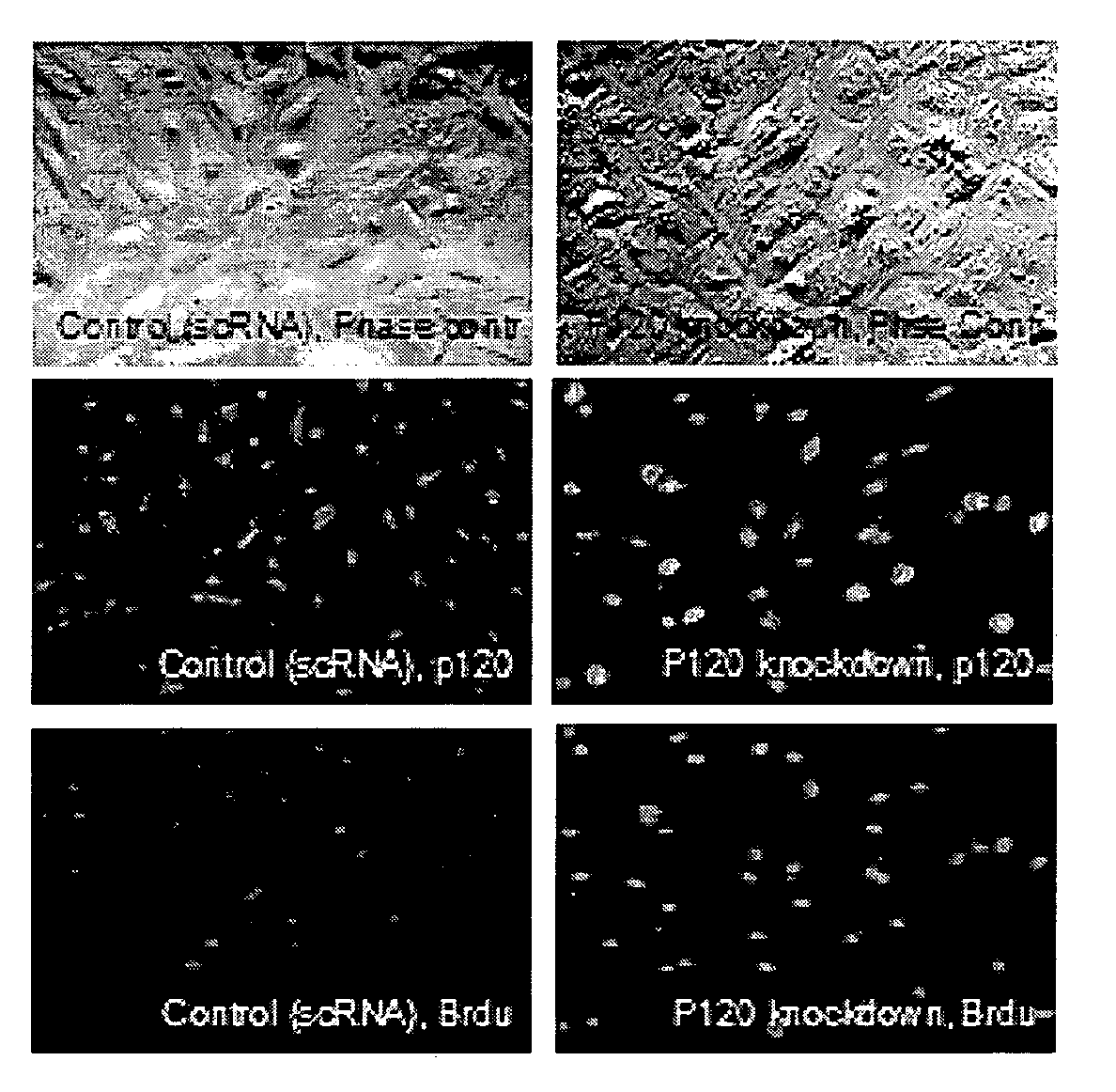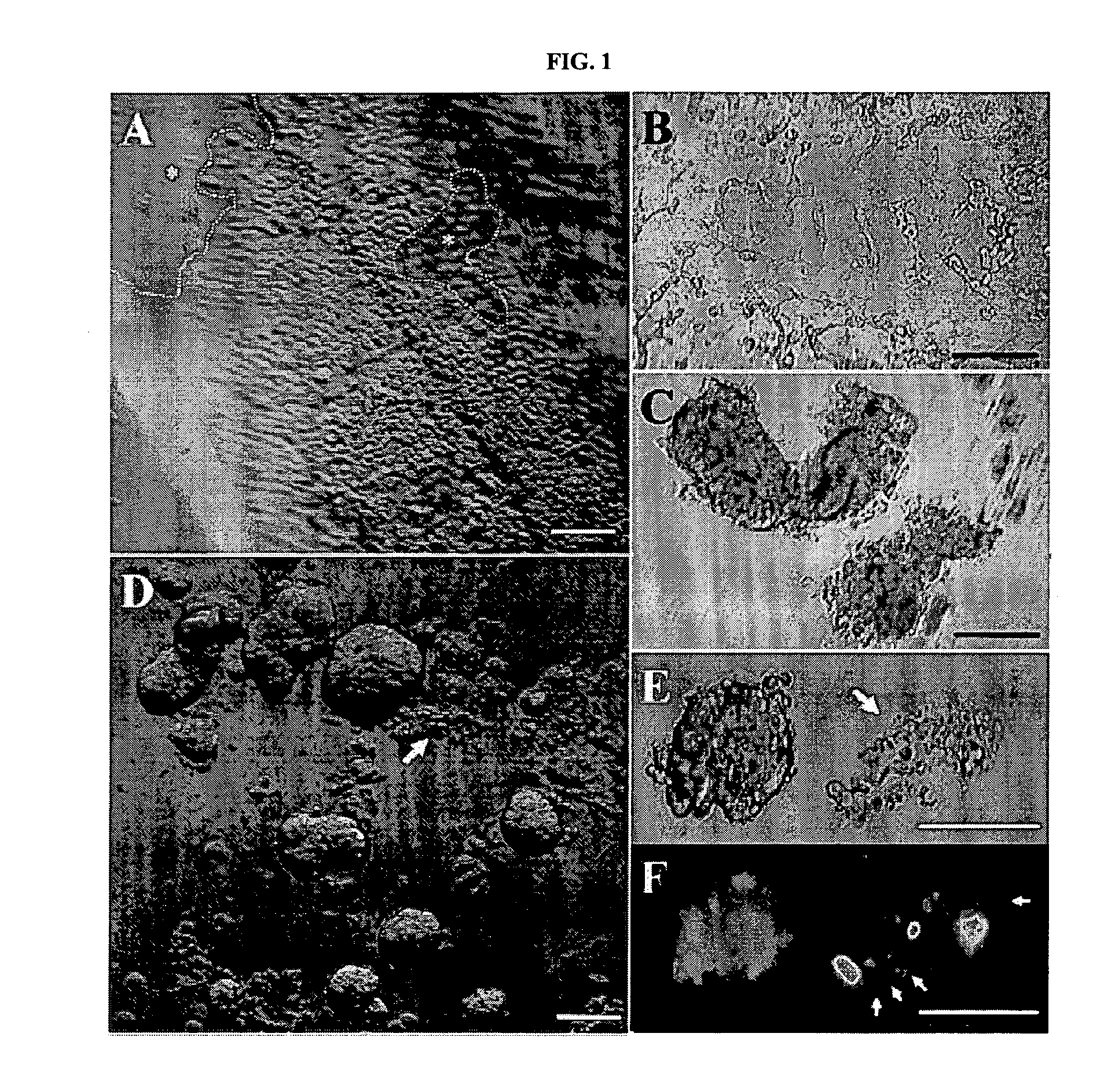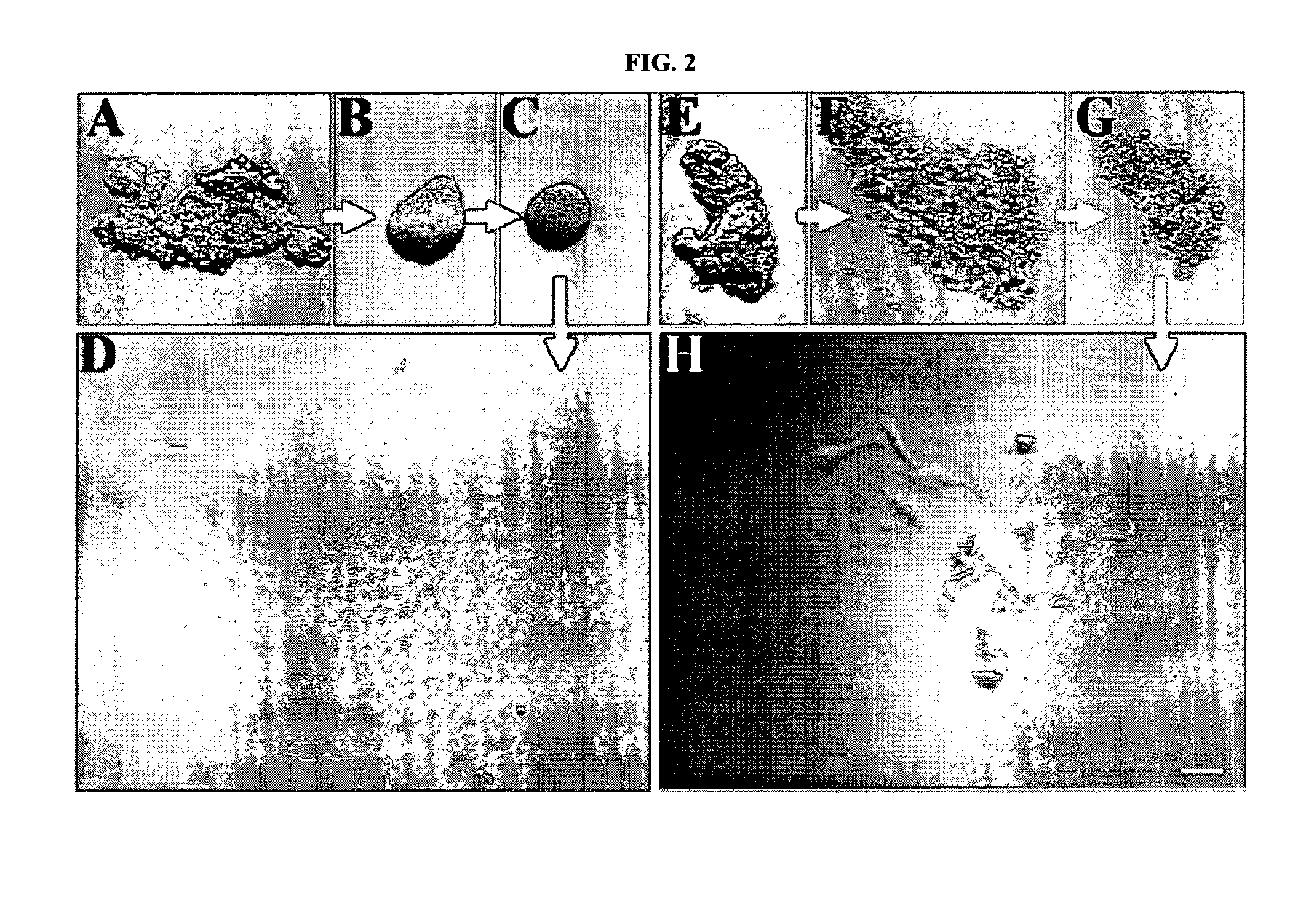RNAi Methods and Compositions for Stimulating Proliferation of Cells with Adherent Functions
a technology of adhesion and composition, applied in the direction of drug compositions, peptide/protein ingredients, prosthesis, etc., can solve the problems of affecting the proper refraction of light affecting the adhesion of hcec, etc., to achieve the effect of promoting hcec adhesion, reducing the thickness of the amniotic membrane, and reducing the thickness
- Summary
- Abstract
- Description
- Claims
- Application Information
AI Technical Summary
Benefits of technology
Problems solved by technology
Method used
Image
Examples
example 1
Isolation of HCECs
[0056]Materials: Dulbecco's modified Eagle's medium (DMEM), Ham's / F12 medium, keratinocyte serum-free medium (KSFM), OptiMEM-1 medium, HEPES buffer, Hank's balanced salt solution (HBSS), phosphate-buffered saline (PBS), amphotericin B, gentamicin, fetal bovine serum (FBS), bovine pituitary extract, human recombinant epidermal growth factor (h-EGF), 0.25% trypsin / 0.53 mM EDTA (trypsin / EDTA), and LIVE / DEAD assay reagent were purchased from Invitrogen (Carlsbad, Calif.). Dispase II and collagenase A were obtained from Roche (Indianapolis, Ind.). Hydrocortisone, dimethyl sulfoxide, cholera toxin, insulin-transferrin-sodium selenite media supplement, L-ascorbic acid, chondroitin sulfate, propidium iodide, Hoechst-33342 dye, Triton X-100, bovine serum albumin (BSA), human basic fibroblast growth factor (h-bFGF), paraformaldehyde, and FITC conjugated anti-mouse IgG were from Sigma (St. Louis, Mo.). Mouse anti-ZO-1 antibody and Type I collagen were from BD Biosciences (Bed...
example 2
Preservation of Isolated HCEC Aggregates
[0066]The resultant HCEC aggregates were preserved in a serum-free low calcium or high calcium medium with different supplements (Table 1). The calcium concentration of storage medium 1, a KSFM-based medium, is 0.08 millimolar (mM), which we defined as “low calcium” medium. The calcium concentration of storage medium 2, 3, and all the culture media is about 1.08 mM, based on the basal medium of DMEM.F12 and the calcium in FBS. We defined these media having a calcium concentration of about 1.08 millimolar (mM) as “high calcium” media.
[0067]HCEC aggregates were stored in a tissue culture incubator at about 37° C. for up to 3 weeks. Cell viability was determined by Live and Dead assay, and also evaluated by subculturing them in a serum-containing medium (Table 2).
TABLE 1Different Storage Media for HCEC AggregatesMediumTypeBasal mediumSupplement1KSFMKSFM supplement2DMEM / F12KSFM supplement3DMEM / F12SHEM medium supplements without FBS
TABLE 2Different...
example 3
Expansion of Isolated HCEC Aggregates Using Trypsin / EDTA
[0071]The resultant HCEC aggregates, either immediately after digestion or following a period of preservation in a storage medium, were then cultured in different culture media (Table 2) on a plastic dish under a temperature of about 37° C. and five percent (5%) carbon dioxide (CO2). The media were changed about every 2 to 3 days. Some HCEC aggregates were pre-treated with trypsin / EDTA at 37° C. for 10 minutes to dissociate endothelial cells before the aforementioned cultivation.
[0072]HCEC aggregates were embedded in OCT and subjected to frozen sectioning. Cryosections of 4 micrometers (μm) were air-dried at room temperature (RT) for 30 minutes, and fixed in cold acetone for 10 minutes at −20° C. Sections used for immunostaining were rehydrated in PBS, and incubated in 0.2% Triton X-100 for 10 minutes. After three rinses with PBS for 5 minutes each and preincubation with 2% BSA to block nonspecific staining, sections were incub...
PUM
| Property | Measurement | Unit |
|---|---|---|
| time | aaaaa | aaaaa |
| time | aaaaa | aaaaa |
| time | aaaaa | aaaaa |
Abstract
Description
Claims
Application Information
 Login to View More
Login to View More - R&D
- Intellectual Property
- Life Sciences
- Materials
- Tech Scout
- Unparalleled Data Quality
- Higher Quality Content
- 60% Fewer Hallucinations
Browse by: Latest US Patents, China's latest patents, Technical Efficacy Thesaurus, Application Domain, Technology Topic, Popular Technical Reports.
© 2025 PatSnap. All rights reserved.Legal|Privacy policy|Modern Slavery Act Transparency Statement|Sitemap|About US| Contact US: help@patsnap.com



